Last Updated on 06/24/2023 by Desmond
TCM has a long history in Asia. In daily life, people use to make some non-irritating herbal teas to keep healthy and treat some simple discomforts. Safflower Tea is the most popular one with a favorable price.
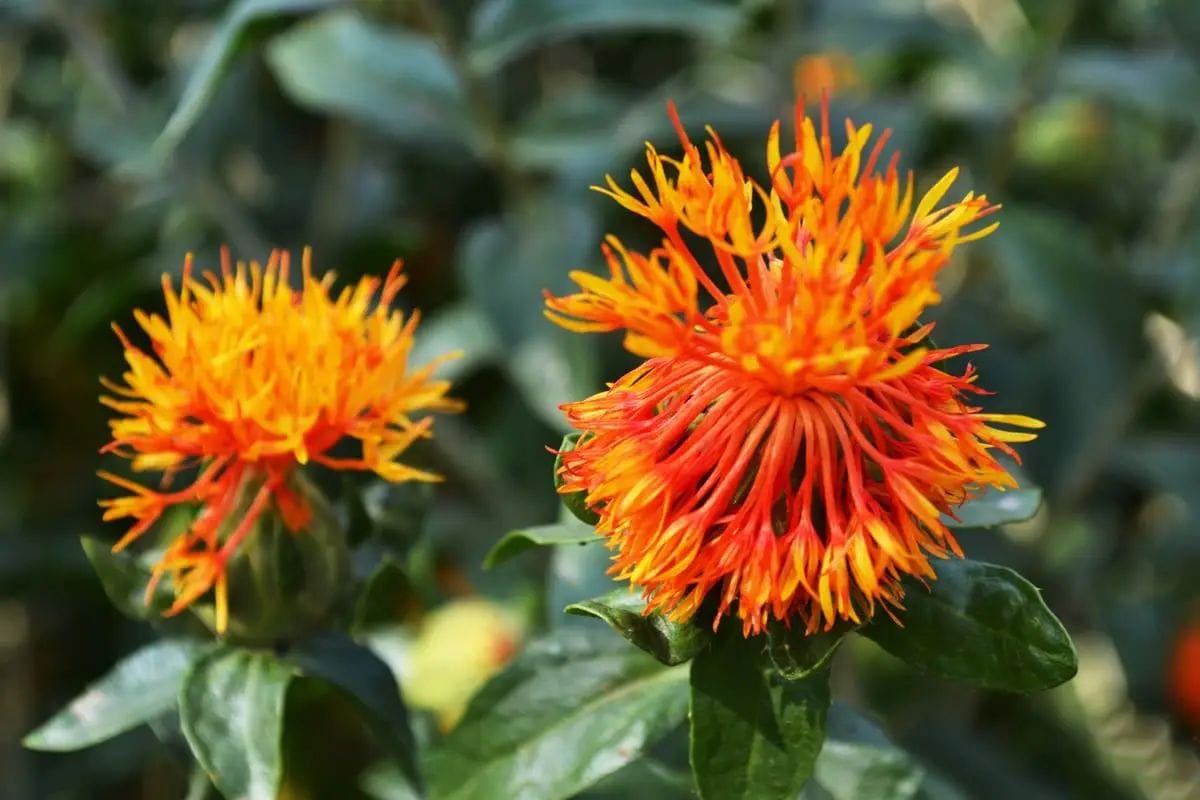
CONTENT
What Is Safflower Tea
History
Safflower belongs to the Asteraceae family, also known as Carthamus tinctorius L., and is native to Europe and West Asia. In ancient times, whether in the East or the West, safflower was the primary raw material for producing dyes and was one of the oldest crops of humanity.
According to scholars, safflower was probably introduced in China during the Western Han period(202 BC – 8 AD). Red is always the Chinese favorite color, safflower started to be cultivated on a large scale to produce dye.
Safflower was first recorded taking as medicine in the Eastern Han period(AD 25 -220), primarily used for blood-related illnesses such as dissipating blood stasis and women’s menstrual disorders. Safflower is easy to get due to its low price, and it soon became an ordinary herb in TCM. And the easy-made safflower tea also became a famous folk healthy drink, especially for menstruating women.
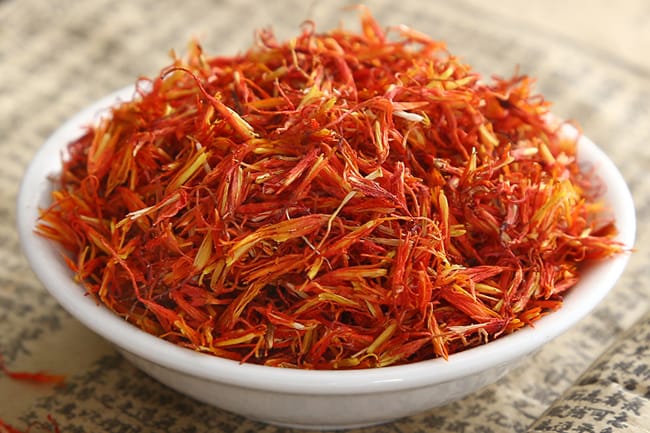
How Does Safflower Tea Taste?
Safflower tea looks golden, like beer, with a unique plant scent, and smells like Yellow Wine(a Chinese rice wine.) It tastes a little bitter and not so friendly. Just like many other TCM herbs, people usually blend safflower with other ingredients for brewing to get a more charming flavor and more health benefits.
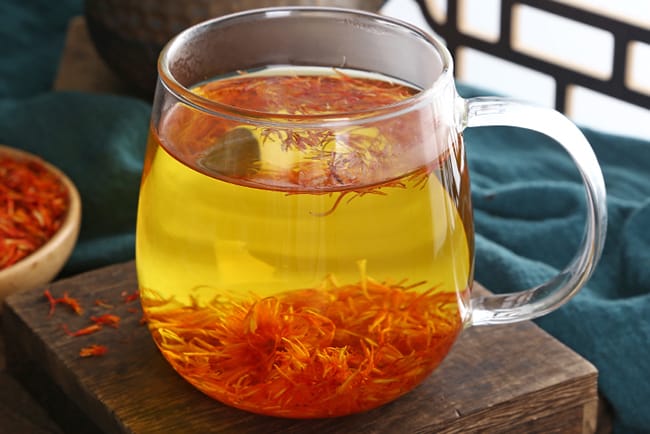
Can Safflower Instead of Saffron?
You may hear about saffron, an extremely expensive herb. Whether in English or Chinese, their names are similar, also their dried products. It often makes people confused. Actually, safflower and saffron are two herbs that are totally different.
The scientific name of Saffron is Croci Stigma, a perennial herb of the Iridaceae family, 藏红花 in Chinese. This name made many people think it originated in Tibet like the Zang Cha, but both of them are not. Actually, although saffron has always been used in TCM, it originated in Europe and was introduced in China till Ming Dynasty. It was transported from the Mediterranean, through India, then Tibet, and finally to China mainland, so it got a name that easily confused people.
Both safflower and saffron are primarily used for solving blood issues in TCM. Still, their specific effects are not the same. Simply, safflower is more focused on fixing, and saffron is more focused on health care.
The medicinal property of saffron is much stronger than safflower; people usually use just a tiny amount for making TCM infusion. Saffron also has excitation to the nerve, overdosage leads to side effects like dizziness. You need to neutralize with other herbs. So, TCM doctors typically don’t suggest people substitute two herbs with each other.
To distinguish safflower and saffron is simple. Saffron products are just made from the top stamen, and safflower products are dried petals; after brewing with hot water will be more obvious. The most important is, the price of saffron per gram is thousands of times safflower; you never worry about that merchant taking safflower instead of saffron.
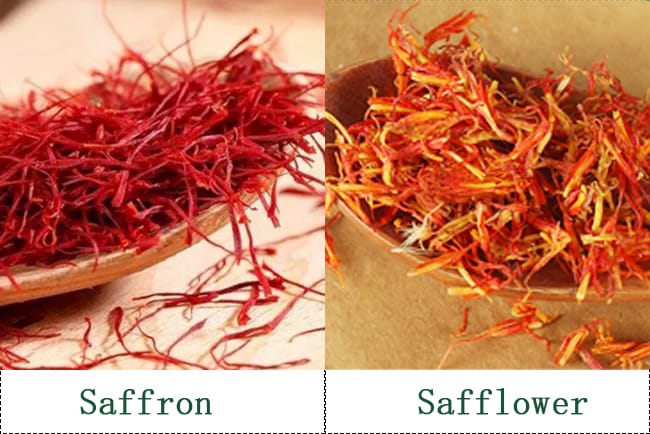
What Is Safflower Tea Good For?
Safflower has been used as a medicinal herb in China for over a thousand years. TCM advocates people take care of the body’s “Yin Yang” in daily life to avoid getting diseases. Some herbs with mild medicinal properties, like honeysuckle, burdock root, and safflower, are Chinese favorite daily herbal teas. Safflower tea not only has over a thousand years of TCM experience support but is also explained by modern medicine.
Relieve Menstrual Pain
Since ancient times, people have known that safflower tea is very suitable for women during their menstrual period. TCM thought that safflower has the benefit of invigorating blood circulation; it can improve the blood system and help manage menstruation. It also contains some antioxidant ingredients which help relieve menstrual pain. But one thing that needs to pay attention to is that safflower can’t be over-intake. Ever some women get profuse menstruation by drinking too much safflower tea.
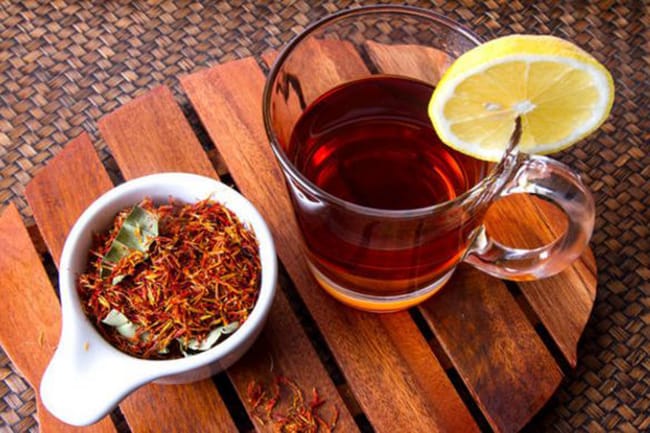
Antioxidant
A study shows that safflower petal contains antioxidant ingredients like Carthamus yellow, quinochalcones, and flavonoids, which can help scavenge free radicals and keep vessels healthy, also anti-aging. Besides, there are two quinochalcone agents in safflower: ginkgolide B and saffloquinoside A. They can give a certain antiinflammation. In Traditional Iranian Medicine, safflower is often used for curing inflammations like a canker sores.
Calm The Nerves
Safflower tea has the benefit of calming the nerves; it primarily owes to the carthamin yellow it contains. This ingredient greatly affects adjusting ischemic anoxia, cerebral anoxia, and myocardial anoxia. People who work all day and have frayed nerves can balance their mood and relax by drinking a cup of safflower tea.
Beauty
Safflower is rich in vitamins, which can help adjust the endocrine, and dissolve melanin, thereby bringing a spot-fading effect. It can also help improve skin problems like acne and pimples. However, most of the beauty ingredients are in the seeds, many skin-care products also take its extract as a main ingredient.
Safflower Tea Side Effects
Like many other herbal teas, safflower tea will also lead to some side effects when you have it incorrectly. In some particular conditions, you should avoid drinking safflower tea.
Contraindicated During Pregnancy
Although safflower tea is very friendly to women, however, it’s contraindicated during pregnancy. The tea will excite the uterus, make fetal anoxia and ischemia, lead to dysplasia, and even worse, abortion. Thus, in ancient times, safflower is also taken as an ingredient of aborticide.
Allergy
Some people may be allergic to safflower oil or its related skin-care products. They should avoid having safflower tea too.
How To Make Safflower Tea
Making safflower tea is simple. Put 5g safflower in a cup or a teapot, fill in about 300ml boiled water, cover, and steep for 5 minutes, then enjoy.
You can also season it will some honey and lemon slices, or take the eastern tradition way – add a few haw slices. After all, pure safflower tea is indeed not so delicious.
Other Uses Of Safflower
Safflower Oil
Safflower seed is rich in oil, so it is also processed into edible oil. Besides, safflower oil benefits much rather than tea. It is considered to effects managing blood fat and anti-aging. But its flavor is weak for cooking, I thought.
One thing worthing to know is that there is a medicinal oil called Red Flower Oil in Asian Countries. Its Chinese name is the same as safflower oil, but its use is totally different. It doesn’t contain safflower, and it’s not edible. When you are traveling in Asia and intend to buy some souvenirs, you must distinguish them well(the medicinal is dark red or brown); do not rely on google translate too much.
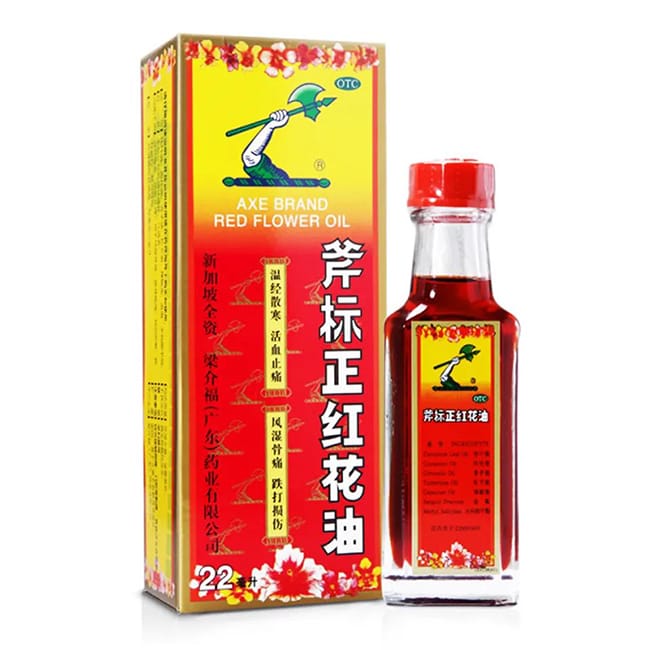
Foot Spa
Asian are addicted to foot spa much. Of course, we won’t just use hot water but with many herbs in the bath. It is said that soaking feet with safflower can improve the cold-foot problem in winter, but it still lacks proof. Even so, due to the favorable price and people’s belief in its blood circulation benefit, safflower is very popular in the foot spa.
Skin-care Products
Safflower has benefits in improving blood circulation and antioxidants, many skin-care products take its extractive as an ingredient.
References
A Metabolic Perspective and Opportunities in Pharmacologically Important Safflower*;